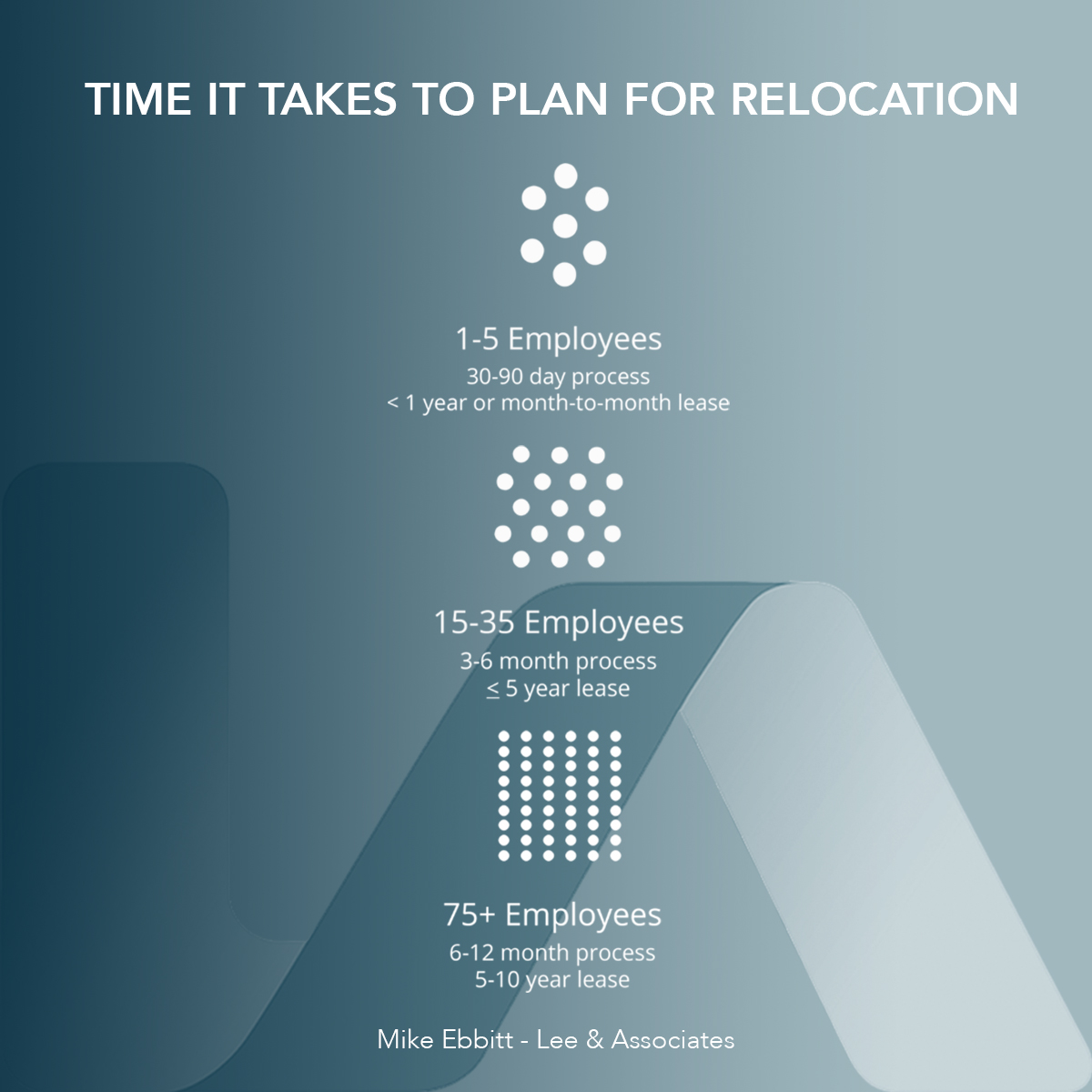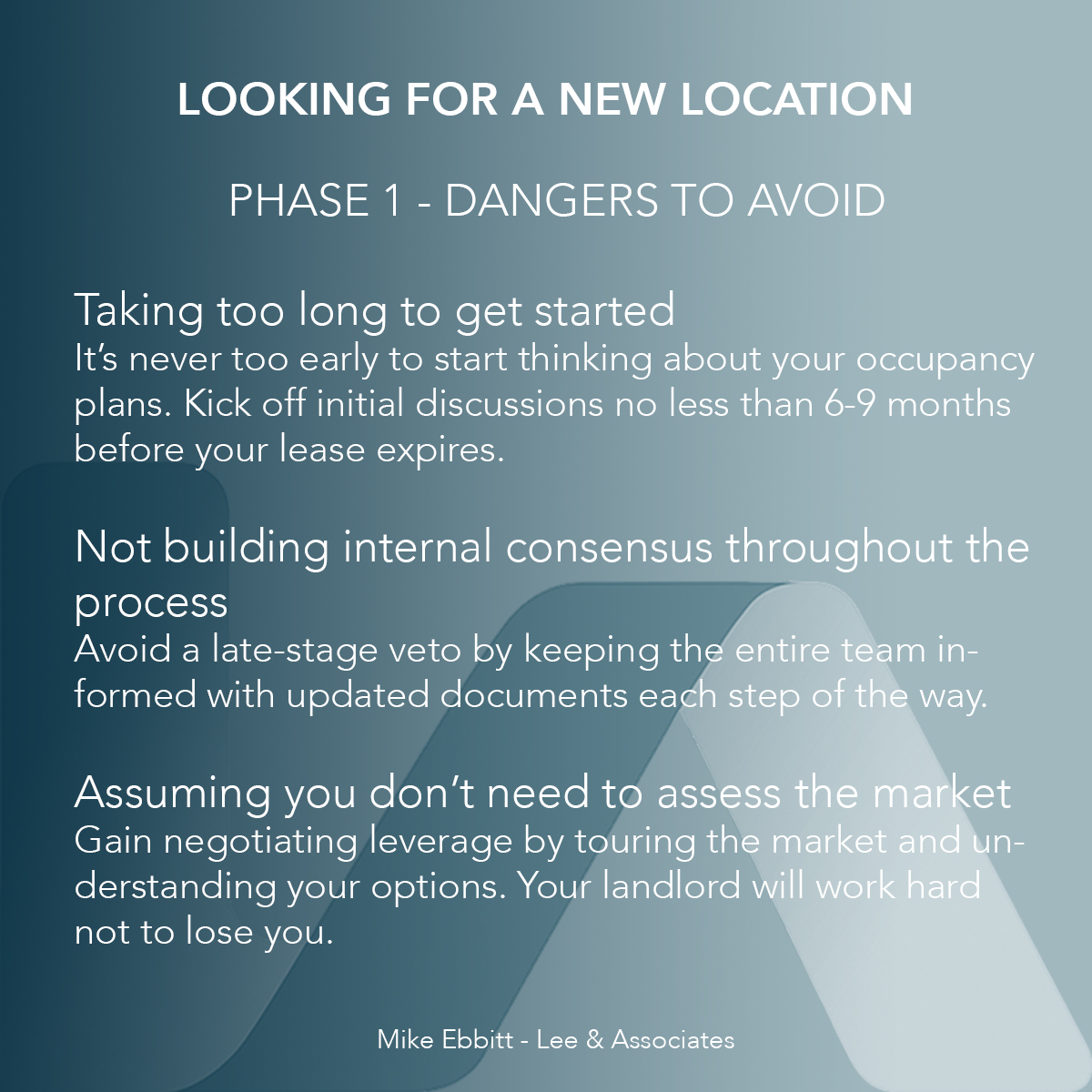Renew or Relocate Guide: Phase 1 – Planning
Markets fluctuate, employees multiply, new technologies emerge. One thing is certain: you need to make room for the future even if you can’t predict it.
Whether that means a moderate renovation or full-tilt relocation, these tips will help you start the discussion. So that if and when you decide to move (and even if you don’t), you’ll know exactly what to expect.
Size Matters
The size of your company will determine both the time the move will take and the type of lease terms you’re likely to get.
Whether it takes 12 weeks or 12 months, your move can be split into three phases:
Phase 1: Planning Phase | 2: Selection Phase | 3: Buildout

I will share Phase 1 with you now.
Phase 1: Plan your strategy
Your move strategy is about more than picking a new building. A real estate decision can affect every facet of your business: productivity, revenue, wellbeing, sustainability and future success.
What are your company’s broader business objectives?
Which real estate decision will support those goals?
How fast is your growth rate? Do you need flexible terms?
What’s your exit plan when the lease ends?
Who is your workforce and what is their work style?
Assess your needs
It’s hard to improve if you don’t know where you stand. Identify inefficiencies in your current workspace, decide how the new space should function and present the plan to stakeholders.
How can operations improve?
What style of building suits you?
Enclosed office or small cube? How many square feet per employee?
Tools to use
Executive and programming questionnaire
Get insight from leadership on the scope of the project and the function of the space. Questions may include:
- Rate the quality of your existing floorplan. How do you define quality?
- What do you want to prioritize most? Customer image? Cost? Recruiting new talent?
- How important are informal meeting areas?
Commute analysis
Traffic patterns affect your location strategy. Where do employees and prospective talent live, and how long is the average commute?
Demographics analysis
Conduct workforce research to figure out who will be using the space. Is your staff multigenerational? What are their needs?
Headcount growth and space analysis
How many executives do you have? Engineers? Sales? Project future headcount by staff level.
 Phase 1: Dangers to avoid
Phase 1: Dangers to avoid
Taking too long to get started:
Time is your biggest asset. Procrastinating in Phase 1 is perhaps the biggest mistake you can make when considering a move.
- Lee Advantage: It’s never too early to start thinking about your occupancy plans. Kick off initial discussions no less than 6-9 months before your lease expires.
Not building internal consensus throughout the process:
Many companies get ready to execute on a new lease only to have the deal go sour because they lack board approval or executive consent.
- Lee Advantage: Avoid a late-stage veto by keeping the entire team informed with updated documents each step of the way.
Assuming you don’t need to assess the market:
Just because you plan to renew your lease doesn’t mean you shouldn’t look elsewhere. The biggest threat you can make to your landlord is a strong case for moving out. This is the last thing they want because they’d be forced to make the space “market ready,” pay leasing commissions and carry the expense for vacant space.
- Lee Advantage: Gain negotiating leverage by touring the market and understanding your options. Your landlord will work hard not to lose you.
Not exercising renewal options:
Renewals without negotiations are dangerous. Why? Even in a stay-put scenario you may find future growth options within your building, need base building improvements, or simply want new paint and carpet in your space.
- Lee Advantage: There are ways to protect your future flexibility in your lease: termination options (if you decide to leave), rights of first offer on adjacent suites (so that you have first dibs on new spaces in your building), and contraction rights (if your needs change and you’re using less space).
